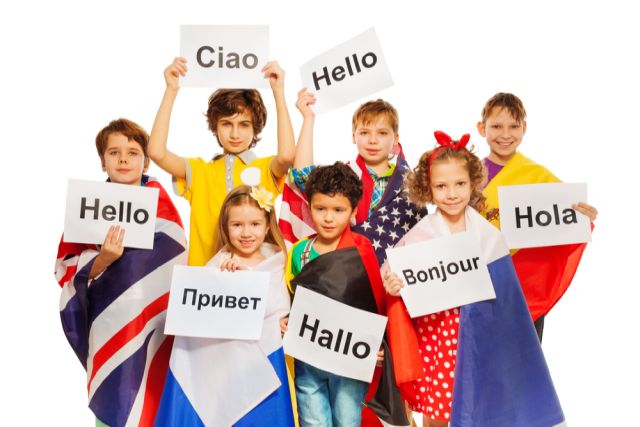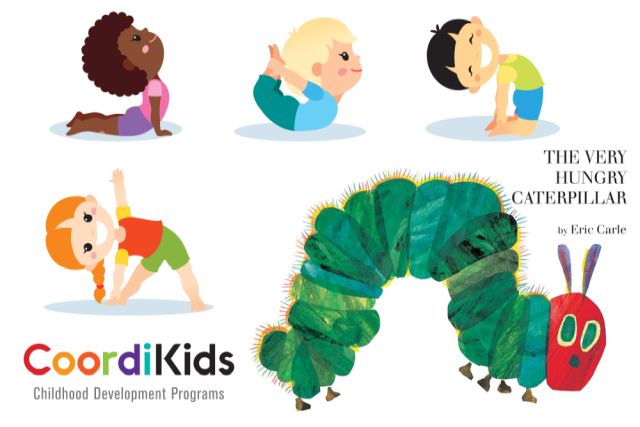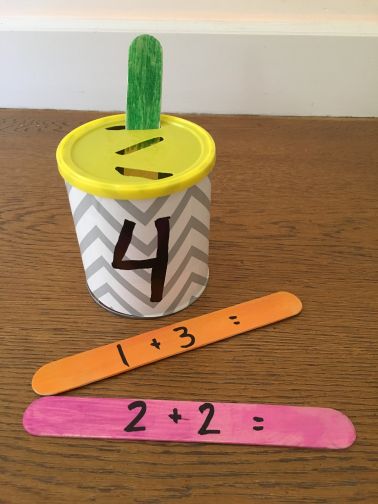ADHD & Attention Deficits, Fun Activities & Games, Help for School and Kindy
Movement in the Classroom: How to Keep Children Active and Improve Motor Skills
The latest research in early childhood development supports what has been known for a long time. The overall message of ‘more movement, more movement, more movement’ – over almost 20 years – has not changed.
Movement in the classroom studies link improved concentration for hyperactive students with brain breaks. In addition, it has been found that students maintain better self-regulation with daily yoga.
They also demonstrate stronger gross and fine motor skills with occupational therapy style developmental exercises. This is good news, because movement in the classroom ideas abound and can be used easily and inexpensively.
Medical reports also reveal that more children today have coordination and motor skill difficulties related to developmental gaps than ever before.
These types of difficulties can affect their learning and everyday life in spades. Just ask mum Megan. You can hear Megan’s story here:
The moral of the story is that we need to start early. We need to start in kindergarten – getting our students physically active as much as possible every single day.
Movement in the Classroom Ideas
For teachers though, it’s a balancing act. It can be hard to navigate the need for more physical activity in the classroom without losing critical curriculum components required by state and federal regulations.
Not to mention the added cost of tools for these exercises. When almost every teacher is already supplementing their classroom budget out of their own pocket, it’s hard to ask them to squeeze in one more thing.
So, how can Kindy teachers keep their students active without compromising elsewhere?
We’ve pulled together some terrific ideas from teachers and occupational therapists for you! Here, we’ve compiled a list of activities you can try in your Kindy class.
These are brain breaks ideas that really address the issues. They target motor skill development and keep your body moving, having fun, and learning – all at the same time.
From the Mouths of Other Teachers: What Works?
“I have found that giving lots of breaks, having active seating options, and encouraging movement REALLY helps kids to focus and cuts down on managing unwanted behaviours.” says teacher Melissa.
Another teacher, Lauren Bischoff, put together her observations from interning at Park Forest Elementary School into a report. The report is entitled “Engaging Kindergarten Students While keeping a Structured Environment.”
She says, “The first thing that came to mind was when a student told me that he didn’t like school, and only liked gym because he got to move around more.
Then I remembered several other students who commented to me that they didn’t like math because it was ‘a lot of work’, or they didn’t like school because it was ‘hard’. In my opinion, brain breaks for kindergarten should be enjoyable!”
After incorporating various brain break activities, Lauren had interesting results to report.
Lauren was happy to report that of the 13 students who initially admitted they didn’t enjoy science, 11 of them genuinely enjoyed the brain breaks for students science lessons.
Here are 7 movement in the classroom ideas teachers can try:
1. Greet the day with a giggle and a wiggle!
Starting every morning out as a group with a fun singalong is already pretty common for you to start your day with your students. But what about using something like this terribly-catchy upbeat sing-along from Champiverse, called “Hola, Bonjour, HELLO!”

I love how it gives a different way of moving and saying hello for each character. Plus it gives you and your student’s opportunities to invent your own salutation movement.
As an OT, I love that it incorporates cross lateral movements, coordination and gross motor skills. Depending on the movement you invent for yourself and for your class, you should include vestibular movements too.
2. Flexible Seating Options
Flexible seating is another fun way to incorporate a bit of movement and coordination practice for your Kindy class. Teacher Melissa says that she has 3 or 4 different seating options around her classroom.
(This is one of the movement in the classroom ideas that can benefit from a little investment in thinking time and contemporary equipment.) She uses yoga balls, yoga mats, and rocker chairs in different stations.
The students have a clipboard that they can carry to the station of their choice. And they are allowed to move freely between stations (within reason).
She says, “My more active students gravitate towards the yoga balls and scoop rockers. They happily bounce and rock while doing their work! Allowing seat choice has really increased productivity… students are SO much more focused!”
3. Incorporate Waldorf math and science clapping exercises
Waldorf early education techniques emphasize physical development and attention to the environment. In context with physical exercises and relationship to the environment,
Waldorf style education teach:
- listening,
- word recognition, and
- patterns
And sequences often utilize:
- language,
- movement, and
- rhythm
You can incorporate simple rhythmic clapping patterns and foot stomping to accompany memorization of various facts or sequences.
A fun way to introduce clapping and counting is to have your students clap out the number of syllables in their name.
Here is an excellent video example from The Balanced Literacy Diet to show you how to get this activity started:
4. Use yoga for storytelling
What list of movement in the classroom ideas would be complete without the inclusion of yoga? The benefits of yoga for students include:
- increased concentration,
- better self-regulation,
- coordination,
- balance,
- flexibility and
- strength.

Here’s one great way to incorporate yoga into the classroom. It is by using the shapes created by the body to narrate stories during literature lessons. For example, this great video from Cosmic Kids Yoga shows you how you can tell a classic children’s story – “The Hungry Caterpillar” – utilizing the flow of movements in yoga.
5. Scavenger hunt spelling games
During spelling lessons, write letters on lots of sticky notes hanging all over the walls in the classroom. When you call out the letters of a spelling word, ask students to run to the walls to find the letters.
Then, the next step is to arrange them in the proper order on their desk. (Make sure you have plenty of multiples of each letter! This will take some time to prepare, but you can reuse the letters throughout the year!)
6. Practice fine motor skills with slot cans and popsicle sticks
Slot cans are a great way for children to practice fine motor skills.
I’ve also been surprised at how many different children of different ages really enjoy the simple task of dropping coins or popsicle sticks into the slots of a jar.
Maybe it’s the sound of the items “clinking” into the bottom of the jar.
Either way, here is a great way to incorporate this fine motor skill game. The idea is to utilize large popsicle sticks with simple math problems written on them.
Line up a row of jars with various “answer” numbers painted on the side and a small slit cut into the top.
Pass out bags full of 5-10 “problem” sticks to each student and have them line up on the opposite side of the room from the “answer” jars.

To play, the children must:
- retrieve a stick from the bag,
- read the problem on it,
- solve the problem in their head,
- find the can with the correct answer on it, and
- slide the popsicle stick into the slot.
7. Use a follow-along program for movement breaks that encourage focus and balance
Of all the movement in the classroom ideas, we love, use and recommend this one! Use a follow-along program for movement breaks that encourage focus and balance in preshool.
Movement breaks are a great way to give students’ brains a break to allow latent learning to sink in. It’s also great for students to have a mental and emotional break and hypothetically push a ‘reset’ button in their body and brain.
A program like our Preschool Course gives you, the teacher, a mental break too. This is because you can simply load up the day’s video and push ‘Play’ with no additional prep work.
Moreton Bay is one school that has been using our program called Preschool Course in their class.
Kindy teacher Tara says, “The parents really appreciated hearing that their children were going to be participating in an exercise program that increased concentration and coordination at the same time. After two weeks, I can see a big difference. The kids enjoy themselves – it’s fun.
But also, they’re paying better attention throughout the day. The children who struggle with coordination are improving. In general, Coordikids’ Preschool Course is part of our whole goal to help our young students prepare for success in school”
Be sure to let us know if you try any of these activities. We are always modifying our tips based on the feedback we receive from teachers like you!
Which ones did your students enjoy?
Were there any that were more work than they were worth? (No one wants to give teachers more hard work than you already do for our children every day!)
Do you have any other activities that your students love?